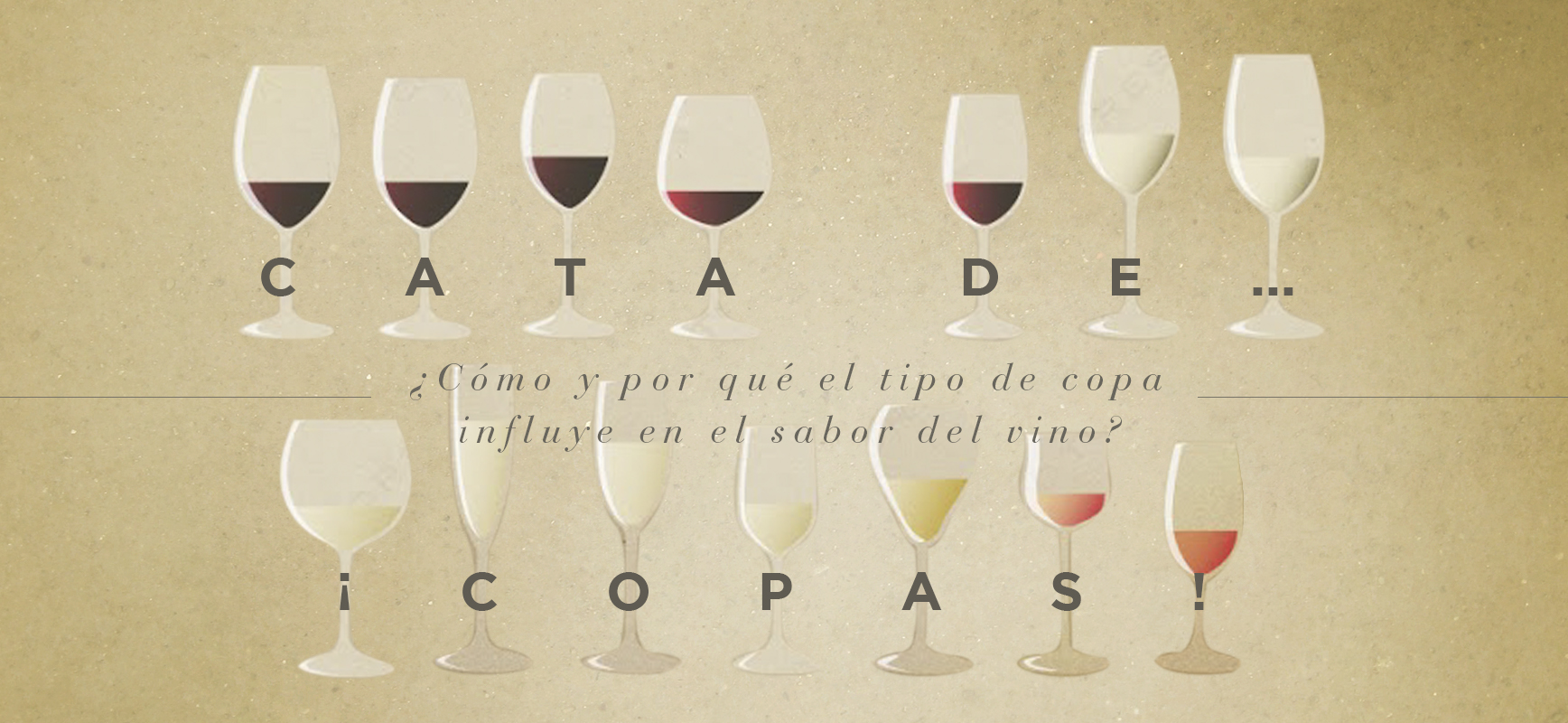A tasting of... glasses!

How and why the type of glass affects wine’s taste?
Sometimes we buy a bottle of wine to take to a friend's house as a "thank you". We carefully select our wine, thinking of the person we're giving it to, and opt for one we know well. In other words, we want to make sure it's a success.
When we arrive, we present and offer the wine to our host, who's interested in it and asks whether it needs to be previously chilled, opened, decanted, etc. We provide our tips, which we know by heart, and await the moment.
In the dining room, we're surprised by an incredibly luxurious table with all the crockery and cutlery neatly placed and impressive glasses that gleam and stand out from the rest. The time has come to uncork the wine and the host opens the bottle and serves, tastes and comments on the wine... "This wine's good; very drinkable and light". Surprised, I think to myself "what? What about its aromatic intensity? And the hints of white fruit that make it so agreeable? And its markedly acidic palate that we should savour until its slightly bitter but wonderfully balanced finish? I try it and, he's right, the wine's only halfway there, filling my mouth with a slightly sweet effect and becoming diluted at the finish with barely any flavour at all…
What's happened to the wine?
Nothing's happened to the wine but we've chosen the wrong glass. I realise there are a lot of details that need to be taken into consideration and we can't control all of them so, on this occasion, we'll just focus on the shape of the glass. I've always believed that wine should be served properly and in a good glass. But which is the right one? They're all right - the challenge lies in finding the one allows the wine to express itself the best.
Tasting wine glasses is yet another step in knowing how to enjoy wine as it's based on the fact that the wine glass affects our taste buds and how they perceive the wine's aromas and flavours, given their ability to capture different tastes and sensations.
Take note:
The mouth diameter of the glass is responsible for directing the wine to the area that interests us. So a glass with a wide mouth makes the wine expand horizontally along the tongue, reaching the zones that are more sensitive to acidity. A narrow-mouthed glass means that, to drink, we have to tip our heads backwards so the liquid flows more towards the centre of the tongue. And if the glass's rim is curved, this makes the wine fall onto the tip of the tongue, creating more contact with the taste buds that are sensitive to sweetness.
The Wine:
So I treated myself to a Torres FRANSOLA 2011 and, together with Montse Velasco (sommelier at La Cuina del Guinardó and winner of the Gold Nose Award 2011), we carried out a tasting of wine glasses to be able to explain our sensations. We invite you to choose a wine you know well and the different wine glasses.
The Glasses:
On this occasion we chose 5 different types of wine glass:
By the company Riedel:
- Vinum La Syrah
- Vinum La Cabernet Sauvignon
- Vinum Extreme Oaked Chardonnay
By the company Spiegelau:
- Authentis 102
- Vino Grande 000
Our plan was to carry out the tasting in one go and, comparing one glass with another, we had to fill the glasses with a generous amount of wine, as if we were going to eat as well. The amount of wine in the glass is also important. The more wine in the glass, the less we have to tip both the glass and the head, affecting how much wine enters the mouth and distributing it much more effectively.
The Aim:
We wanted to find out which wine glass was the most expressive, providing us with the most sensations and preserving the wine's personality the best.
The Tasting:
- Glass 1: Authentis 102
Thin top palate, moving directly onto the finish with marked acidity and persistent bitterness
- Glass 2: Vinum La Cabernet Sauvignon
Hefty top palate, well-balanced acidity with a notable mid-palate; a pleasant, slightly sweet perception and somewhat short finish.
- Glass 3: Vinum La Syrah
Delicate top palate with an enveloping acidity, a swift mid-palate with final hints of almond.
- Glass 4: Vino Grande 000
Voluminous top palate and noticeable mid-palate with slightly sweet sensations and a warm, lingering finish.
- Glass 5: Vinum Extreme Oaked Chardonnay
A composed top palate with very sweet sensations offset by persistent bitterness and a rounded, elegant finish.

We must remember that, unlike in a wine tasting, here the aim is to note how the wine travels around the palate and, for this reason, it shouldn't be kept on the tongue but should be drunk while paying attention to all the different developments happening on the palate until it's swallowed.
Having decided how each glass performs, our options are increased since the same wine has a different taste in different glasses, giving us much more leeway for pairing.
We've tried to describe our sensations in order to show you the different possibilities, although these should only be taken as a guideline.

